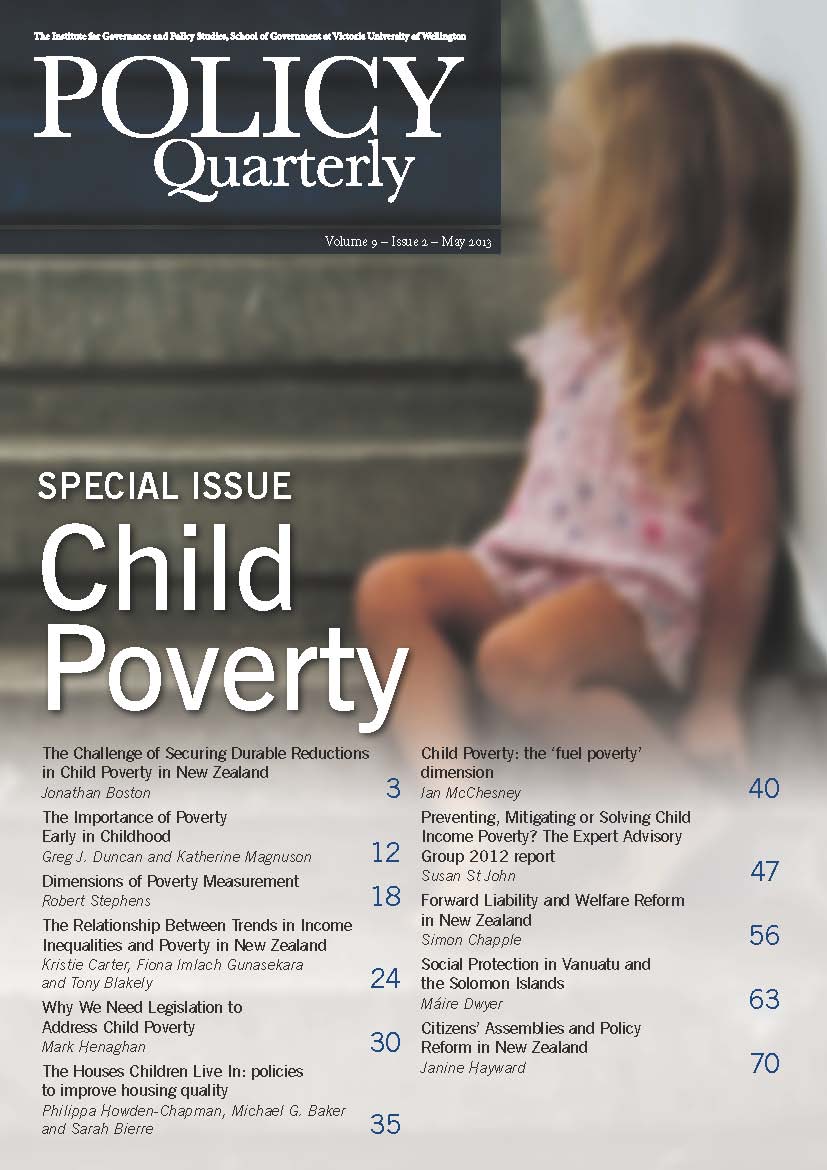The relationship between trends in income inequalities and poverty in New Zealand
DOI:
https://doi.org/10.26686/pq.v9i2.4451Keywords:
persistent poverty, poor child development, income inequality, lower socio-economic status as adults, Household Economic Survey (HES), Survey of Family, Income and Employment (SoFIE)Abstract
There has been much discussion recently about poverty, particularly child poverty, and the harmful effects of persistent poverty (Perry, 2012; Expert Advisory Group on Solutions to Child Poverty, 2012a, 2012b; Imlach Gunasekara and Carter, 2012). Children who experience many years of poverty are at higher risk of poor child development, worse health outcomes as children and adults, and lower socio-economic status as adults (Duncan, Ziol-Guest and Kalil, 2010; Evans and Kim, 2007; Malat, Hyun and Hamilton, 2005; Najman et al., 2010; Seguin et al., 2007; Gibb, Fergusson and Horwood 2012; Poulton et al., 2002). This raises special questions around the role of the state in protecting children from harm (and increasing the chances of a healthy and productive future workforce) through child poverty reduction which New Zealand society has not yet resolved. There is also concern about a high level of income inequality (the gap in income between rich and poor) in New Zealand, and reports of executives’ high salaries and generous raises frequently trigger debate. Poverty and income inequality are often assumed to go hand in hand, but this is not always the case.
Downloads
Downloads
Published
Issue
Section
License
Permission: In the interest of promoting debate and wider dissemination, the IGPS encourages use of all or part of the articles appearing in PQ, where there is no element of commercial gain. Appropriate acknowledgement of both author and source should be made in all cases. Please direct requests for permission to reprint articles from this publication to Policy-Quarterly@vuw.ac.nz.



